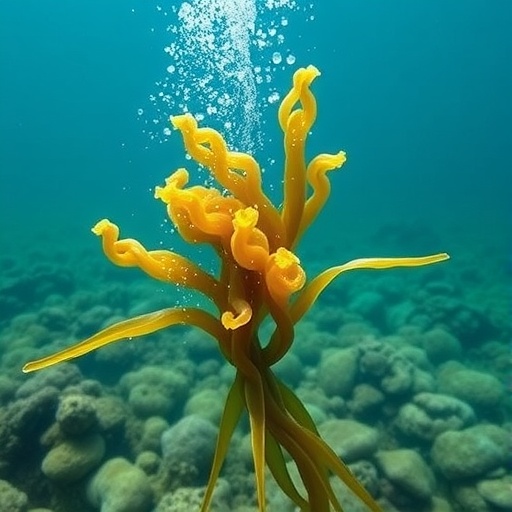The increasing urgency to address climate change has sparked significant interest in the development of sustainable materials for carbon capture technologies. In a remarkable advance, a research team has explored the potential of seaweed industrial by-products, specifically utilizing these materials as a binder for producing activated carbon pellets aimed at enhancing CO2 adsorption capabilities. This innovative approach not only provides a means to tackle carbon pollution but also adds value to materials that would otherwise be discarded in the waste stream.
In recent years, the search for effective and environmentally friendly methods to capture carbon dioxide has intensified. Activated carbon has emerged as a central player in this domain; its porous structure allows for the efficient adsorption of CO2, making it an ideal candidate for various environmental applications. However, the production of activated carbon typically relies on fossil resources, raising concerns about sustainability. This has compelled researchers to seek alternative raw materials that are not only abundant but also have a lower environmental impact.
Seaweed, a sustainable marine resource, has garnered attention not just for its nutritional benefits but also for its potential use in environmental applications. The valorization of industrial by-products from seaweed processing offers a dual benefit: it reduces waste and contributes to the production of useful materials. By harnessing these by-products as a binder in the formation of activated carbon pellets, researchers are making strides towards creating carbon capture solutions that are both effective and environmentally responsible.
The study emphasizes the significant role of the binder in the fabrication of activated carbon pellets. Traditionally, binders are derived from non-renewable sources, which poses challenges in terms of sustainability. The research illustrates that seaweed extracts can serve effectively as a natural binder, providing mechanical strength and structural integrity to the activated carbon pellets. In turn, this innovative material composition can enhance the overall performance of the CO2 adsorption process, presenting a promising avenue for further investigation.
One of the pivotal aspects of this research involves the systematic analysis of the adsorption abilities of the created activated carbon pellets. By conducting a series of rigorous tests, researchers have demonstrated that pellets made using seaweed-based binders are comparable, if not superior, to conventional activated carbon products. The results underline the potential of integrating renewable materials into carbon capture technologies, which could revolutionize the industry and significantly lower greenhouse gas emissions.
Moreover, the ecological advantages of utilizing seaweed by-products extend beyond mere carbon capture. This research contributes to the circular economy by promoting the use of waste products in manufacturing high-value materials. Instead of being relegated to landfills or incineration, seaweed by-products can find new life in applications that benefit both the environment and economic development. This
Tags: activated carbon production from seaweedcircular economy in waste managementclimate change solutions using seaweedeco-friendly carbon adsorbentsenvironmental applications of seaweedgreen technology in carbon pollution controlinnovative carbon capture technologiesreducing waste through seaweed valorizationseaweed by-products for carbon capturesustainable alternatives to fossil resourcessustainable marine resources for CO2 reductionsustainable materials for CO2 adsorption





